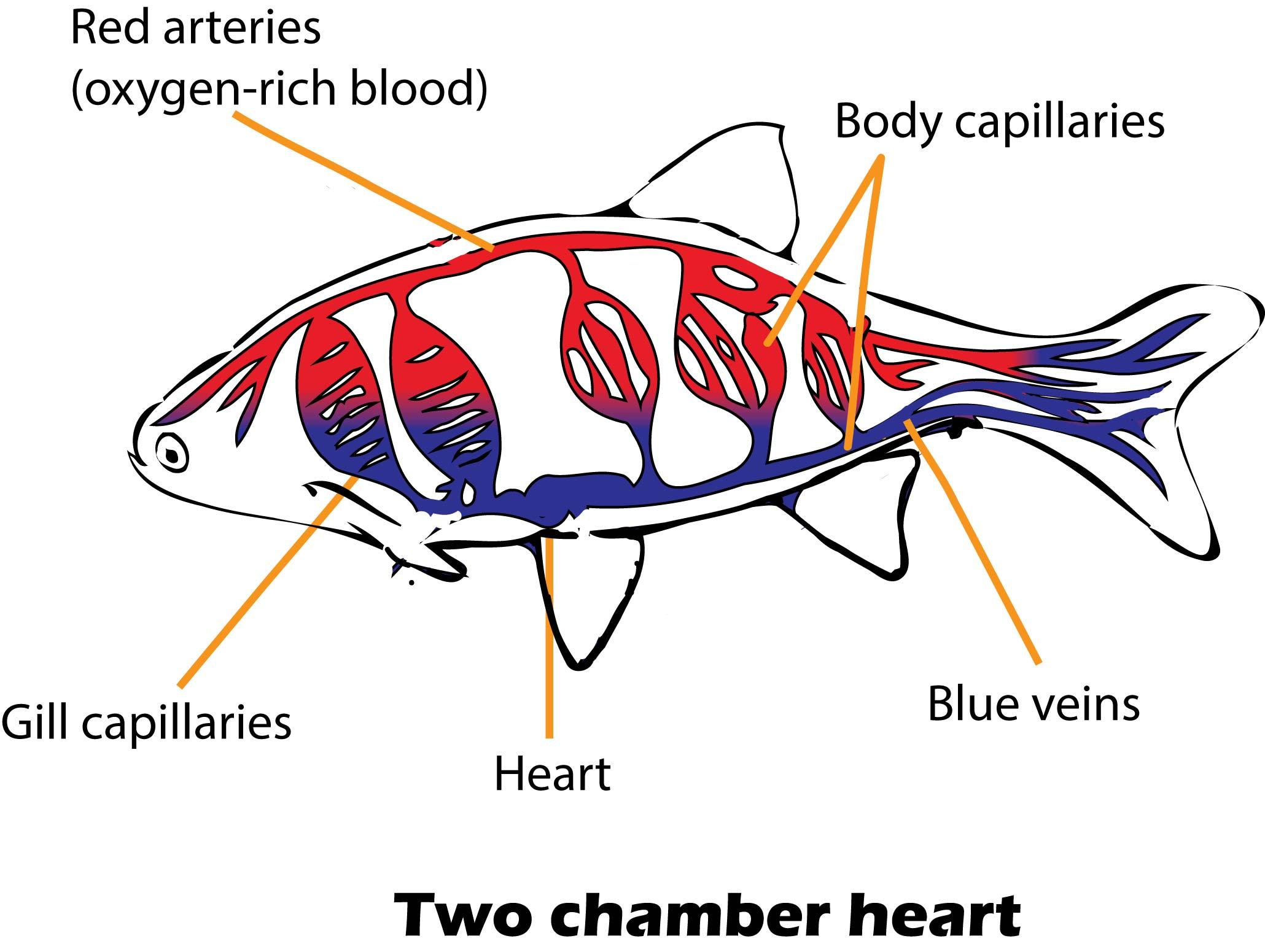
Two chambered heart occurs in
A) Crocodiles
B) Fish
C) Aves
D) Amphibians
Answer
509.4k+ views
1 likes
Hint: In two chambered hearts the blood is not free in a cavity that forms a closed- loop system. Thus, they have gills to breathe and to purify their blood. They are ectothermic and live in water.
Complete answer:
Fishes have a closed-loop circulatory system, where the heart pumps the blood in a single loop throughout the body. Crocodiles have a four-chambered heart. Aves and amphibians have a three-chambered heart that shows more complex circulation than fishes.
Additional Information:

-Fishes are vertebrates are gills bearing animals that lack limbs and digits.
-Fishes have four parts of the heart including two chambers.
-The blood enters through the sinus venosus to the atrium and sends it to the ventricle where it pumps out of the heart.
-The presence of bulbus arteriosus which connects the aorta and is responsible for the pressure of blood in the heart.
-The ventricle pumps deoxygenated blood to the gills and oxygen from the surrounding water is replenished to the blood.
-Mammals and birds have a high oxygen demand and have high metabolism thus have a four-chambered heart so it can flow more rapidly to the other tissues.
-Two and three chambered hearts are less efficient than four chambered hearts due to mixing of blood.
So, the correct option is ‘fishes’.
Note:
-Animals having two-chambered hearts use gills to replenish oxygen in the blood.
-Animals having three or four hearts are those that also contain lungs for respiration.
-Amphibians have a three-chambered heart that is two atria and one ventricle.
-In the chambered heart the right atrium receives oxygen-poor blood from the body and the left ventricle pumps out the oxygen-rich blood to the body.
Complete answer:
Fishes have a closed-loop circulatory system, where the heart pumps the blood in a single loop throughout the body. Crocodiles have a four-chambered heart. Aves and amphibians have a three-chambered heart that shows more complex circulation than fishes.
Additional Information:

-Fishes are vertebrates are gills bearing animals that lack limbs and digits.
-Fishes have four parts of the heart including two chambers.
-The blood enters through the sinus venosus to the atrium and sends it to the ventricle where it pumps out of the heart.
-The presence of bulbus arteriosus which connects the aorta and is responsible for the pressure of blood in the heart.
-The ventricle pumps deoxygenated blood to the gills and oxygen from the surrounding water is replenished to the blood.
-Mammals and birds have a high oxygen demand and have high metabolism thus have a four-chambered heart so it can flow more rapidly to the other tissues.
-Two and three chambered hearts are less efficient than four chambered hearts due to mixing of blood.
So, the correct option is ‘fishes’.
Note:
-Animals having two-chambered hearts use gills to replenish oxygen in the blood.
-Animals having three or four hearts are those that also contain lungs for respiration.
-Amphibians have a three-chambered heart that is two atria and one ventricle.
-In the chambered heart the right atrium receives oxygen-poor blood from the body and the left ventricle pumps out the oxygen-rich blood to the body.
Recently Updated Pages
Master Class 11 Economics: Engaging Questions & Answers for Success

Master Class 11 Business Studies: Engaging Questions & Answers for Success

Master Class 11 Accountancy: Engaging Questions & Answers for Success

Master Class 11 English: Engaging Questions & Answers for Success

Master Class 11 Computer Science: Engaging Questions & Answers for Success

Master Class 11 Maths: Engaging Questions & Answers for Success

Trending doubts
Which one is a true fish A Jellyfish B Starfish C Dogfish class 11 biology CBSE

State and prove Bernoullis theorem class 11 physics CBSE

1 ton equals to A 100 kg B 1000 kg C 10 kg D 10000 class 11 physics CBSE

In which part of the body the blood is purified oxygenation class 11 biology CBSE

One Metric ton is equal to kg A 10000 B 1000 C 100 class 11 physics CBSE

Difference Between Prokaryotic Cells and Eukaryotic Cells




